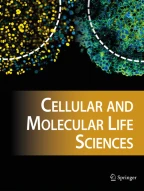Abstract.
Cartilage oligomeric matrix protein, also known as thrombospondin-5 (TSP-5), is an extracellular matrix protein found primarily in cartilage and musculoskeletal tissues. TSP-5 is of interest because mutations in the gene cause two skeletal dysplasias, pseudoachondroplasia (PSACH) and multiple epiphyseal dysplasia (MED/EDM1). Both PSACH and EDM1 have a characteristic chondrocyte phenotype distinguished by giant rough endoplasmic reticulum (rER) cisternae containing TSP-5 and other extracellular matrix proteins such as type IX collagen and matrilin-3. The accumulation of proteinaceous material in the rER compromises cellular function and leads to premature chondrocyte death. Both in vitro and in vivo models have been generated with varying degrees of success to study the cellular mechanisms of the disease process. Here we review and discuss in vitro and in vivo PSACH and MED model systems and describe two transgenic mouse lines expressing human mutant TSP-5 protein. These model systems have revealed several important features of the PSACH cellular pathology: unfolded protein response activation, upregulation of apoptosis and inappropriate assembly of matrix network in the rER. Some of these models are valuable reagents that may be of use in testing therapeutic interventions. (Part of a Multiauthor Review)
Similar content being viewed by others
Author information
Authors and Affiliations
Corresponding author
Rights and permissions
About this article
Cite this article
Posey, K.L., Yang, Y., Veerisetty, A.C. et al. Thrombospondins: from structure to therapeutics. Cell. Mol. Life Sci. 65, 687 (2008). https://doi.org/10.1007/s00018-007-7485-0
Published:
DOI: https://doi.org/10.1007/s00018-007-7485-0
